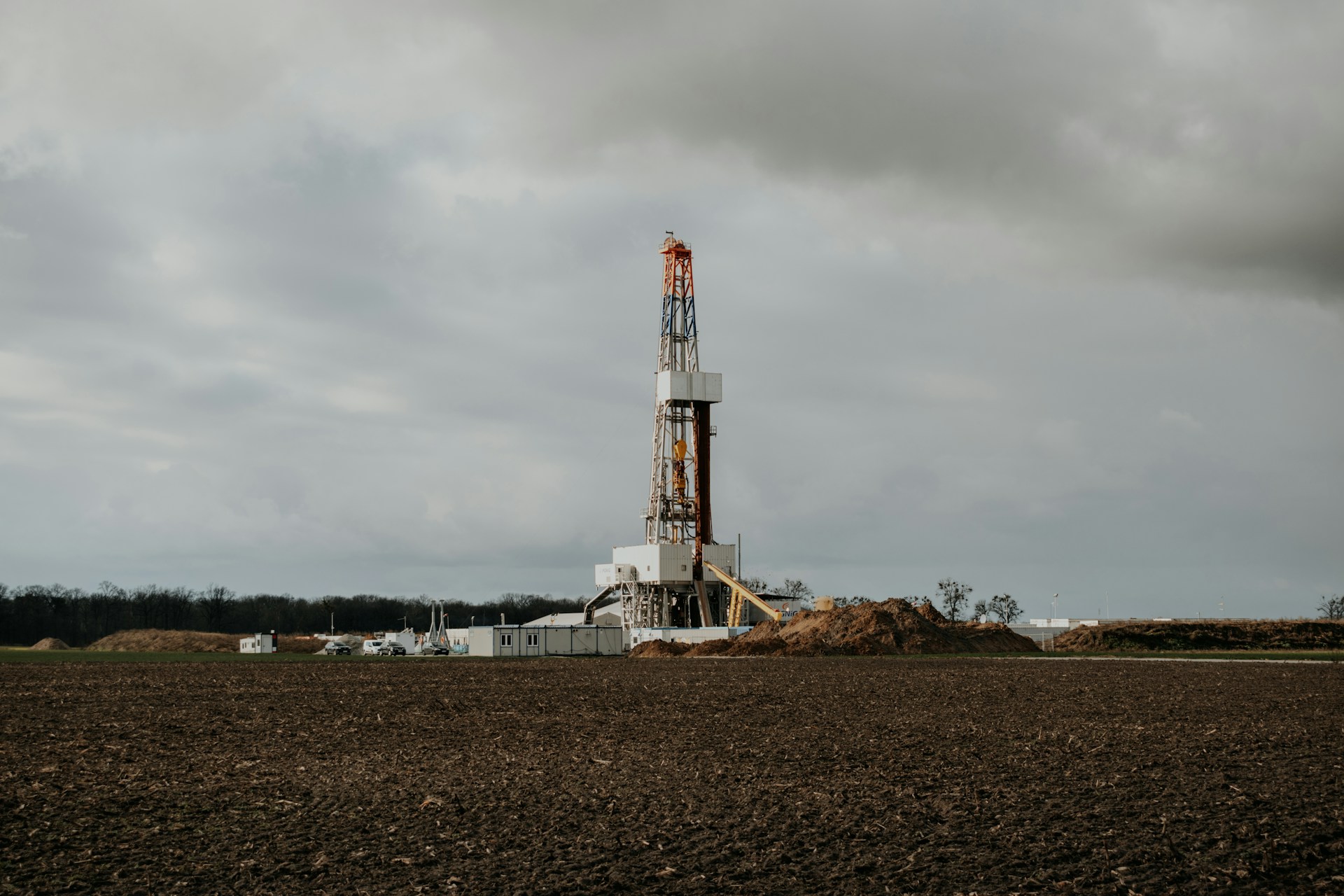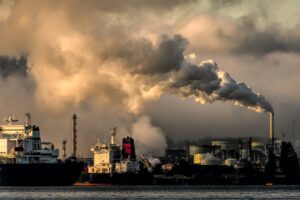On Monday 16 June 2025, the EU Energy Council will discuss integrating the proposed Energy Omnibus package with several provisions that risk weakening the Methane Regulation.
According to the European Commission, the purpose of the Energy Omnibus is to reduce energy prices by supporting the development of renewables and is not intended as a tool to weaken the climate package. To ensure this objective is upheld, Member States meeting at the Energy Council on Monday 16 June will need to oppose the Polish Presidency’s proposal—supported by Romania and Hungary—to include these provisions in the Omnibus. In fact, just one opposing vote would be enough to prevent it. Italy has every reason to resist any weakening of the European Methane Regulation. In this article, we explain what methane emissions are, the role they play in emission calculations and what Italy can do.
According to the International Energy Agency (IEA), methane emissions are responsible for around 30% of global temperature increases since pre-industrial times. The energy sector, which emitted 145 megatonnes (Mt) of methane in 2024, is the largest contributor, followed by agriculture (137 Mt) and waste (64 Mt).
Also in 2024, the oil sector emitted over 80 Mt of methane, with around 40 Mt more coming from coal extraction. The UN Environment Programme’s International Methane Emissions Observatory (IMEO) estimated that of these 80 Mt, upstream assets contributed 83% and midstream the remaining 17%. In the upstream segment, the main source is venting, followed by fugitive emissions and incomplete combustion due to low-quality flaring. In the midstream segment, LNG liquefaction, transport and regasification plants account for over 40% of emissions, transport systems over 50% and underground storage systems around 7%.
These emissions could be avoided using existing technologies, in some cases even at negative cost, but are often not implemented due to a lack of monitoring and specific regulatory tools.
Differences between gas-producing countries
Most methane emissions from fossil fuels used in Europe are linked to imports. An analysis by the Clean Air Task Force, based on Rystad data, estimates that between 2027 and 2031 the average methane intensity of EU gas imports will be 3.0 Gg/bcm (thousand tonnes of methane per billion cubic metres of natural gas imported). This intensity is higher for imports from Africa and the United States, and much lower for Norway[1], which is known for adopting various procedures to reduce methane emissions from oil and gas activities. For crude oil imports into Europe, methane intensity is estimated to average 8.5 Gg/Mton (thousand tonnes per million tonnes of crude oil).
Figure 1 shows the absolute methane emissions of the main importers of natural gas and crude oil in 2024, based on IEA data, highlighting the differing impacts of regulatory instruments between different countries from which the EU imports gas and oil.
Figure 1 – Absolute methane emissions (kt) of the main European natural gas and crude oil importers in 2024 (IEA data)
If the net methane intensity of natural gas imported from Norway is 0.08 Gg/bcm, other countries from which the EU heavily depends on for gas and LNG imports show an average methane intensity more than 30 times higher:
- United States: 6 Gg/bcm
- Russia: 9.3 Gg/bcm
- Algeria: 9.9 Gg/bcm
- Qatar: 3.2 Gg/bcm
- Azerbaijan: 3.1 Gg/bcm
In practice, this means that if the combustion of 1 cubic metre of gas (m³CH₄) theoretically produces 2 kg of CO₂[2], this value remains largely unchanged when the gas is imported from Norway. However, considering methane’s Global Warming Potential of 29.8 over 100 years, as highlighted in the latest IPCC report (AR6), the value becomes 2.1 kgCO₂/m³CH₄ for gas from Qatar or Azerbaijan (around 6% higher), 2.2 kgCO₂/m³CH₄ from the United States (12% higher), 2.3 kgCO₂/m³CH₄ from Russia (17%), and 2.4 kgCO₂/m³CH₄ from Algeria (23%).
The European Methane Regulation
The European Commission has issued a Regulation, based on the 2020 European Methane Strategy, aiming to reduce methane emissions from fossil energy produced or consumed within the EU, as part of the broader strategy to achieve climate neutrality by 2050[3].
The implementation of various monitoring requirements, methodologies to assess the equivalence of procedures between the EU and non-EU countries, and the tracking of gas and oil along the supply chain is scheduled for 2030, with different specifications expected between 2025 and 2029. The EU’s ability to develop tools to eliminate methane emissions along the supply chain is essential to ensure the use of gas as a transition fuel, while reducing its impact through best available practices[4].
The European geopolitical context and Italy’s role
On 16 June, at the EU Energy Council, some countries will propose the inclusion of the 2024 European Regulation on the reduction of methane emissions in the energy sector within a simplification decree focused on energy-related directives and regulations (Energy Omnibus). What is the goal? To introduce less stringent procedures and requirements, particularly in relation to the implementation of methane emissions monitoring systems for gas infrastructure and the traceability of import origins. As previously highlighted, depending on the supply chain from which the gas originates, methane emissions can vary from 80 to 9900 tonnes per billion cubic metres. This means that heating a home in Italy, assuming an average annual consumption of 1400 m³, would result in the emission of 2800 kgCO₂eq if the gas comes from Norway and 3400 kgCO₂eq if it comes from Algeria.
Introducing simplifications before the Regulation has been fully implemented risks creating confusion and increasing doubts about its effectiveness. Furthermore, the Regulation itself allows for exceptions where implementation may be too complex (initial consideration of Regulation No 73) or burdensome (initial consideration of Regulation No 69).
The Regulation is therefore a key component of the EU’s climate action and the European Green Deal. Italy has consistently supported it and is once again called upon to defend it in line with its 2024 Integrated National Energy and Climate Plan (NECP) and the commitments made at the 2024 G7 Energy meeting.
Why the regulation matters for Italy
Italy imports a significant amount of gas from countries with high methane intensity, such as Algeria and the United States. As a result, its average methane intensity for gas imports is around 7.1 Gg/bcm, more than twice the European average, and second only to Slovakia and Bulgaria. The methane intensity of oil imports is even higher, at 13.1 Gg/Mton, due to diversified sources.
Italy’s 2024 NECP highlights its commitment to reducing methane emissions along the gas and oil supply chain and to participating in initiatives aimed at encouraging exporting countries to adopt higher safety and environmental standards. The NECP notes that Italy has supported the regulation and the development of voluntary regulatory frameworks for measuring, monitoring, reporting and verifying methane emissions across the natural gas supply chain, to ensure data is “as accurate, transparent, comparable and reliable as possible”.
These principles—accuracy, transparency, comparability and reliability—are the cornerstones of the Regulation. A simplification of the monitoring and verification procedures for the gas and oil supply chain would be a step in the wrong direction and would undermine the credibility of Italy’s stated position in the NECP that natural gas has a role to play in the energy transition.
Through the Regulation, the EU and Italy not only push companies to adopt best available practices, but also strengthen their commitment to aligning with the 1.5°C climate scenario and to paving the way for the gradual phase-out of fossil fuels.
NOTES
[1] The country has established strict regulations to limit methane emissions from oil and gas activities. These regulations include requirements for monitoring, reporting and verification (MRV) of methane emissions, as well as financial penalties for non-compliance. The country has also adopted advanced technologies for methane detection and quantification, including satellite observations and other modern methods to accurately measure methane emissions. Norway’s commitment to methane emissions also extends to unmanaged sites.
[2] According to the table of national standard parameters published by ISPRA and used for the UNFCCC national emissions inventory, the emission factor for natural gas (methane) is: 2.004 tonnes of CO₂ per 1000 standard cubic metres (Stdm³).
[3] The EU MER also complements the EU’s existing external engagement strategy on energy, with the aim of providing technical assistance to partners for the implementation of methane abatement technologies through the “You Collect, We Buy” programme. The EU and Algeria should jointly trial this programme.
[4] The Regulation also indirectly contributes to enhancing the overall safety of installationsl. International standards (such as ISO 13702) require fire and gas monitoring systems to prevent flammable mixtures from causing fires and explosions. These requirements mandate detection systems with higher thresholds for flammable gas concentrations (for methane, the flammability limit is 4%). This means that a detection “structure” already exists to which sensors can be added at the levels required by the regulation. Such systems help prevent major accidents that could result in the loss of the installation itself, with not only environmental consequences, but also risks to personnel and significant economic impacts.
Photo by Natalia Grela







